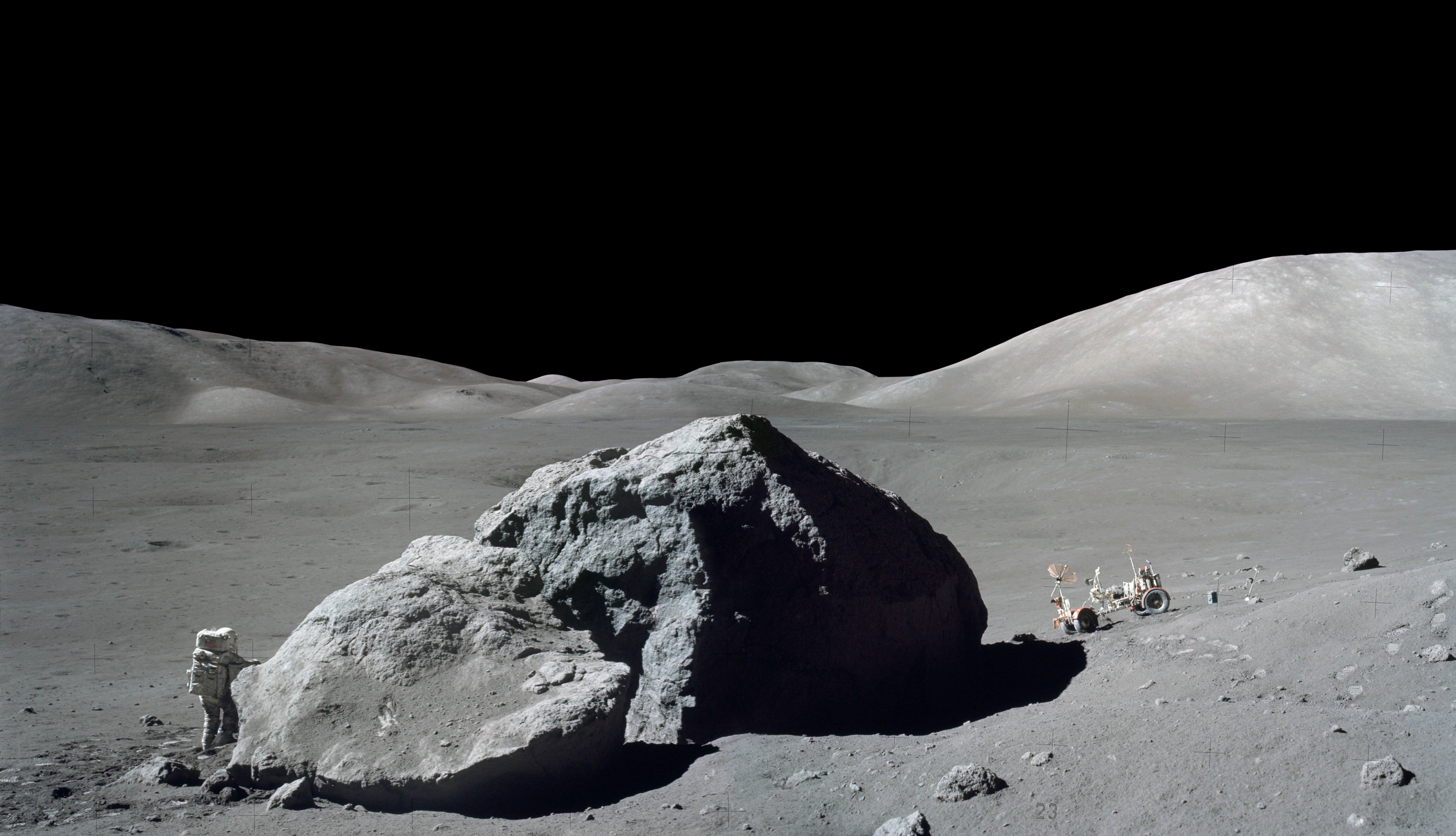Will there come a time when we on Earth can look up at the Moon and know that people are living there permanently?
40 years ago today, humans left the Moon for the last time during our visits during the Apollo program. Author Andrew Chaikin has been creating a series of videos on why space exploration is important, and to mark the 40th anniversary of the last human footsteps on the moon, he looks back at Apollo 17’s explorations and explains why he believes the Moon is the solar system’s “jewel in the crown,” beckoning us to return.
“The Moon is an ideal place for future astronauts to tackle the enormous challenges of living on other worlds,” Chaikin says, “a kind of outward-bound school for learning to live off-planet that is just three days away from home.”
You can see all of Chaikin’s videos here, and here’s an interview we did with Chaikin last year, “Was the Apollo Program an Anomaly?”
Additionally, read a great article the Amy Shira Teitel wrote for us last year about the Apollo 17 mission’s last Moonwalk.
[/caption]


Now that’s a Jazzy presentation! I really liked the animations! A class project… Thanks for ‘hooking me up’ Nancy! Anyone reading my comments will know that I am a vocal proponent of mankind’s eventual return to La Selena!
But are we prepared for this rare opportunity to leave entrenched capital behind? We should be… (Go Elan! to the moon!) A return to the moon… offers everyone wealth.. and if everyone was wealthy? what would we do with the greedy?
Recent findings that the lunar crust is highly fragmented (Drilling ops!) AND craters at the poles contain water ice deposits is just the ‘frosting on the cake’ as far as I’m concerned!
“Hey Buddy.. Can you spare a dime, or an economic boost or even a complete economic paradigm shift? Then… Step right up!”
If the lower gravity of the moon were to be a problem for the human body long term would sleeping and doing office work in centrifuges on a daily basis, like a fixed moon surface Ferris wheel, minimise or get rid of the problem? Solar powered with battery back up would make them cheaper to run.
Maybe the ‘trick’ would be to wear a motion resistive exoskeleton or pneumatic suit? Strap it on and every motion offers a 1 gee equivalent computer controlled set of resistance forces to the major muscle groups, thus mimicking the forces of gravity… I like this idea!
I wonder whether you could simply just knit in resistance in a bio suit by working in elasticity and different densities into clothing fabric where the joints and stretch areas are? That doesn’t completely replicate the gravitational attraction a person feels relative to the Earth, even when stationary, though. Efferent muscular demands on the bone does create forces that in turn exercises a skeletal structure, but at the same time that happens on Earth the force of gravity additionally affects the whole body, even when sleeping. Having a centrifugal Ferris wheel on a lower gravity celestial body, or travelling as part of a space ship, would greatly reduce the time astronauts spent exercising to compensate for lack of that gravity. I’m just trying to figure out if there is any safe way of boarding a moving centrifugal habitat in outer space or low gravity from a relatively stationary position, through a hollow cylindrical axle. Would we have to schedule stops to board or not? (Next stop 7am!). I speculate if protection from air leaks in such a habitat could be obtained from the technology we already have on water proof ship propeller shafts?
I’m not sure why the moon would be a particularly ideal place. The poles would be worth visiting, for sure.
But it would be nice to go somewhere outside of low earth orbit again. 40 years on, and no prospects in the near future.
I’d prioritise having a long term settlement at celestial bodies with water if it it found that they do contain guaranteed extractable amounts of water. Now that there is evidence that plants can adapt to different gravities (see first link) it would be easy to produce food and oxygen in environments otherwise totally hostile to Earth life. The Moon, Mars and now Mercury (see last link) all promise the hope of relatively easy life out yonder.
(http://news.nationalgeographic.com/news/2012/121207-plants-grow-space-station-science/)
http://www.planetary.org/blogs/emily-lakdawalla/2012/11291206-mercury-polar-ice.html
I heard that some scientists are trying to create a 3D printer that can use moondust.
Correct:
http://www.parabolicarc.com/2012/12/15/researchers-use-3-d-printer-to-produce-parts-with-lunar-simulant/
___________________The Moon, a “precious gift” ________________________
From Luna’s orbit-encircling, balancing hold of embrace,
She promotes Life-passage of a ruling Homeworld Place.
Aglow in Space, gentle her ebb and flow of caresses,
To rise and fall in rhythmic pulse, as Life progresses.
The World of her Time, appear stripped of its heavenly “jewel”,
If no longer near to offer, her lunar cycles to continually renew.
When clouds unveil stars of terrestrial season, through evening air,
From ring of World radiance, she appears, cheeks blushed so fair!
By Earth-Realm eclipsed, captured in time’s enveloping shadow.
That World enthroned in Sunlight, fixed, she will forever follow.
Her journal stained with tears, reveals the deep scars of lost years.
But in hoped-for tomorrows, she brightens to banish all her fears!
Shyly, has she beckoned man with her subtle charms of night:
To boldly stir his heart – inflaming his dream of celestial flight!
She welcomed the adventurous men, who had risen on Apollo’s fire;
Launched from a longing vision, to realize plans of heavenly desire.
Ornament of a World’s day, she rises, the jeweled gift of its night;
Her ring of time from Planet of Life, forever to stay in Earth-light!
– JRC _____________________________________________________________
( Inspired by Mr. Andrew Chaikin’s vedio: “Apollo’s final footsteps, 40years later” )